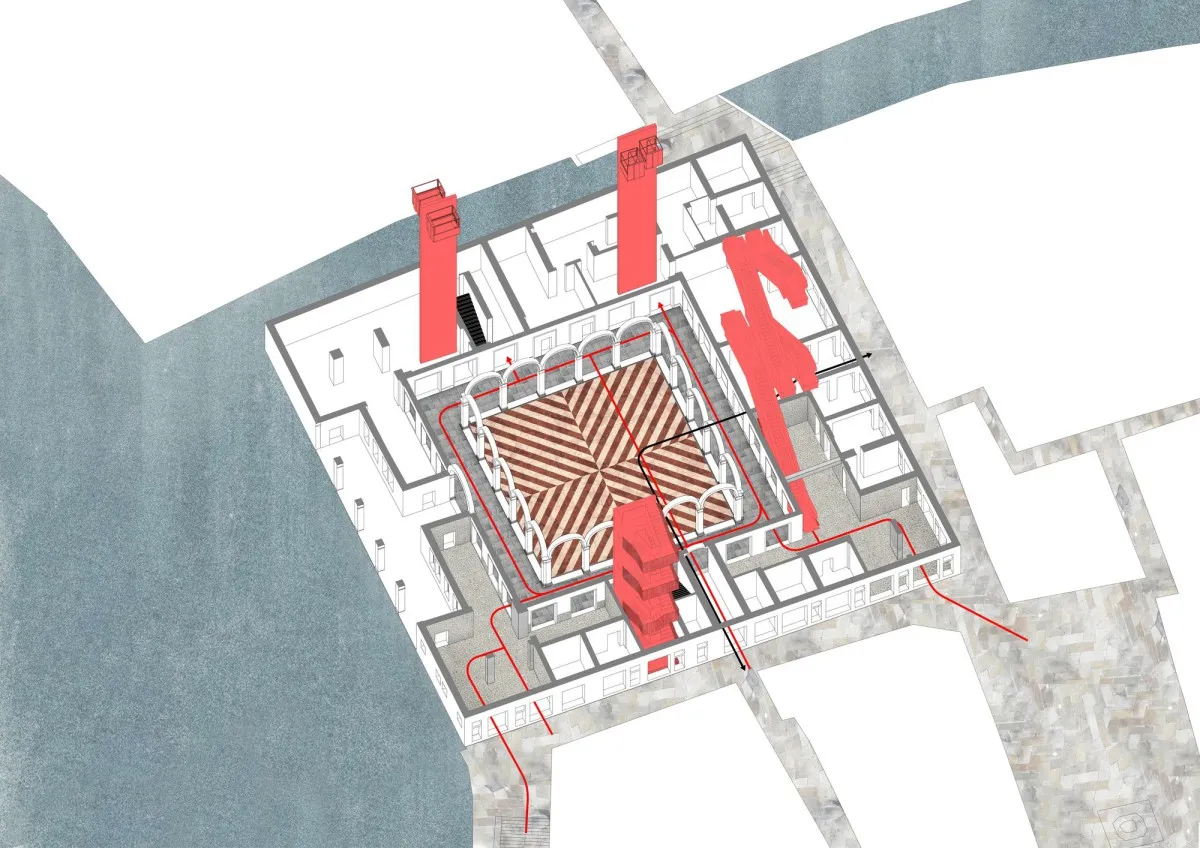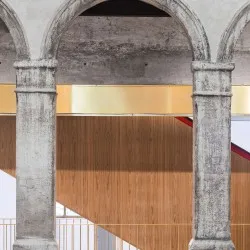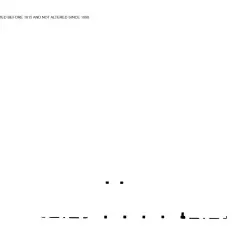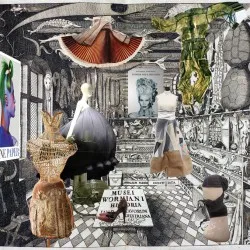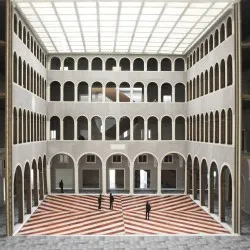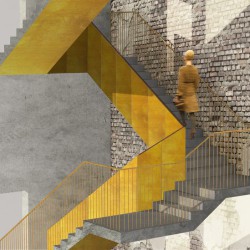OMA. photos: © delfino sisto legnani . © marco cappelletti
First constructed in 1228, the Fondaco dei Tedeschi, one of Venice’s largest buildings, was a trading post for German merchants before becoming a customs house under Napoleon in 1806. Depicted by Canaletto and other masters, and photographed numberless times as the impressive but anonymous backdrop for the Rialto, the Fondaco now stands as a muted icon of the Venetian mercantile era. Twice destroyed by fire and rebuilt (in its current form in 1506), and then subject to a series of radical architectural interventions in the 20th century to accommodate new uses (towers removed, courtyard covered with glass, windows added, structure rebuilt again…), the Fondaco has constantly reshaped itself, accumulating many layers of ‘authenticity’: its preservation is a history of change.
_
As Venice’s native population shrinks by about 1.2% each year, the Fondaco’s current role as a post office has diminished, leaving the bulk of the building unused for the first time in centuries. The latest evolution of the Fondaco will reactivate the building as a thriving contemporary trading post, in the form of a culturally-programmed department store.
OMA has designed a range of architectural modifications and developed a cultural masterplan to re-establish the building as a vital public space. A terrace with rare views of the Grand Canal will be created by removing two sides of the existing roof, leaving the building’s profile intact while unlocking potential for the Fondaco dei Tedeschi as a major destination and vantage point for tourists and Venetians alike.
New entrances to the building will be created from the Campo San Bartolomeo and the Rialto to encourage circulation (and existing entrances into the courtyard, used by locals as a shortcut, will be retained); escalators will be added to create a new public route through the building; rooms will be consolidated in a way that respects the Fondaco’s structure; crucial historic elements like the corner rooms will remain untouched.
Department stores have historically been incubators for the arts, collaborating with graphic designers, fashion designers, musicians and artists in a very public venue. With the Cultural Masterplan for the Fondaco dei Tedeschi, our ambition is to resurrect this relationship between art and commerce – a very Venetian mixture.
_
In a city already rich in the arts, the Fondaco dei Tedeschi will offer a permanent cultural venue and focal point for Venetians themselves as well as the Biennale and festival crowds (900,000 annually), and the far larger number of visitors to the city each year who come independently of the city’s special events (20 million). AMO’s cultural masterplan is made up of a series of events, activities, and projects for the public spaces of the Fondaco: the courtyard, the roof terrace, and the interior spaces. Practioners from various realms will be invited to participate: visual art, film, music, graphic design, environmentalism, politics, architecture, science, computer programming, journalism, blogging. The Fondaco will be a condenser for a diverse audience and ever-changing events, unpredictable in everything except its constant presence as a public venue in the city.
OMA’s renovation scheme – composed both of architecture and programming – continues the Fondaco dei Tedeschi’s tradition of vitality and adaptation. Venice will acquire a landmark department store that will become a shared civic facility and a crucial element in the cultural fabric of the city.
_

